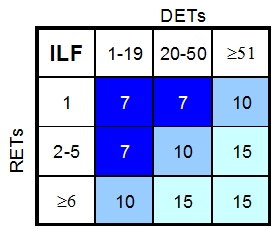As shown in my post Methods for measuring the Size of Software, the comparability between KPIs of IT systems of different sizes
requires a size measurement method. As well as the effort estimation of a planned development task.
Since 1979 the best-known method for the analysis of the
functional size (as described in the standard ISO/IEC 14143 for Functional Size Measurement) is the Function Point Analysis (FPA). The current standard of FPA is ISO/IEC 20926:2009. Now
the method does not need estimations, because it only counts, and all weights
are determined. Thus different measurements by different persons always result in the
same value, sufficient methodical know-how provided.
 |
| Objects to be counted by the Function Point Analysis |
The Function Point Method considers the use cases of a system and counts related user functions / transactions, where data is being sent across the system boundaries (EI = External Input, EO = External Output, EQ = External Inquiry), and structures of internal and external data files (ILF = Internal Logical File, EIF = External Interface File) related to it. A Function Point Analysis according to the original method requires a good understanding of the system’s functionality. Therefore the effort can be high. Today there are approaches for an automated counting (e.g.: http://www.omg.org/spec/AFP/1.0/Beta1/PDF/). These approaches require a good understanding of the code structures and naming conventions related to the user functions and transactions, otherwise structural characteristics will be counted instead of functional. The benefit of such approaches is that counting can be repeated easily after changes of the application have been made and need to be measured.
 |
| Matrix for the rating of a structure in an Internal Logical File |
Most companies, which are measuring the functional size at all, apply the Function Point Method. Unfortunately often by using the approximation method Rapid, which do not consider the complexity at all and replaces the interval scales by average values. Measurements show that counting user functions and data structures without considering the number of related data elements resp. their complexity leads to a restricted comparability of the measured systems. There are other methods complying with ISO/IEC 14143 where this has been improved.
No comments:
Post a Comment